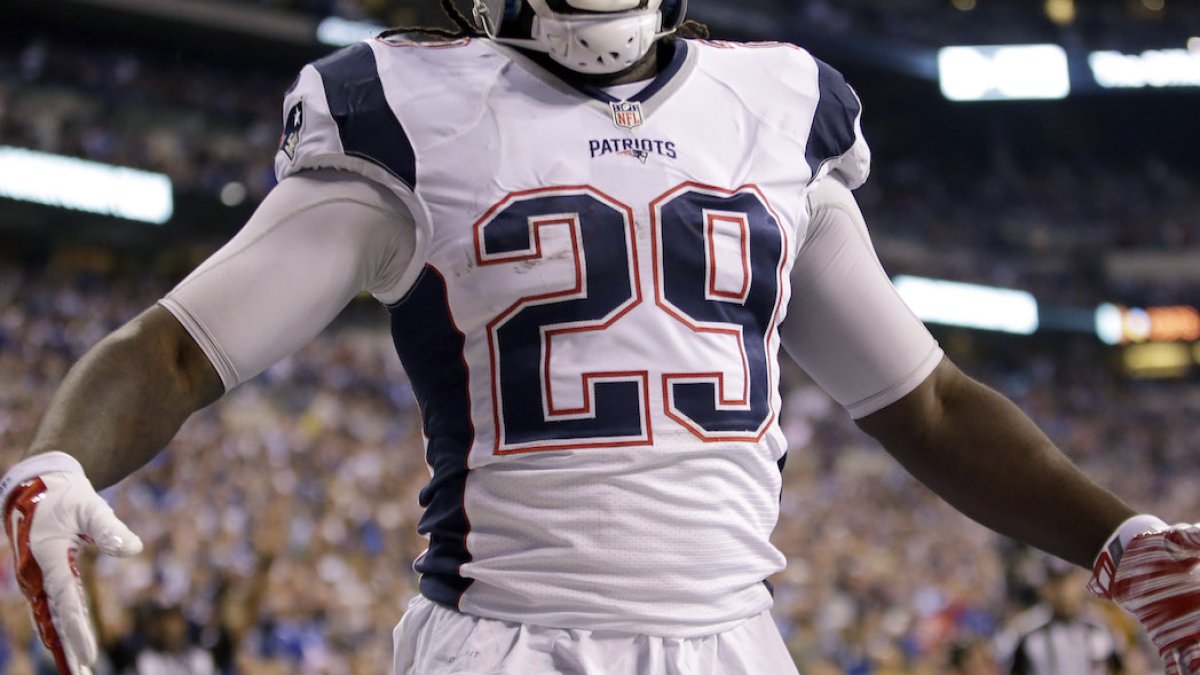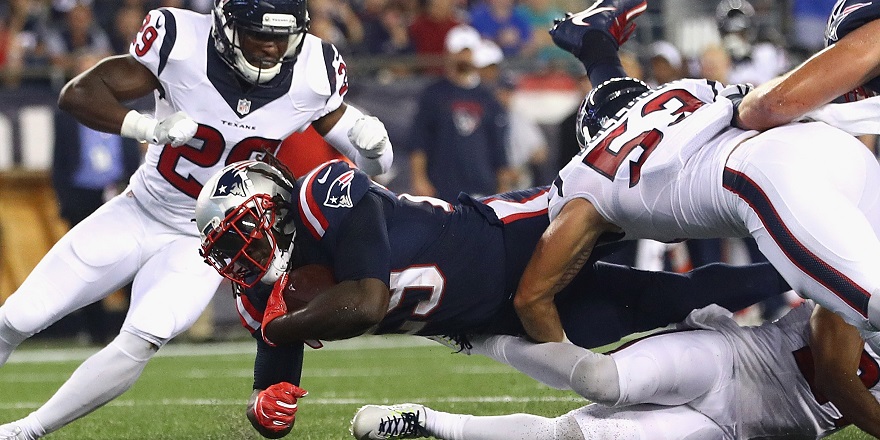(“Today's Crazy Fantasy Stat” is an occasional offseason offering from PFF that highlights something that catches our eye and aids in our preparation for the 2017 fantasy season.)
In 2008, LenDale White, Michael Turner, and Brandon Jacobs were all top-20 fantasy running backs in standard leagues, despite collectively amassing 2.55 percent of their yards on receptions — meaning 97.45 percent of their yards from scrimmage came on the ground. While running backs, obviously, are going to get a lot of their yards on the ground, those three stand out. In fact, in the list of all top-20 running backs in the last 10 years (standard leagues), those three rank first, second, and fourth in percentage of their yards on the ground.
Take a trip through that list, and you can track the changes in football over the decade. Five of the top seven in percentage of yards on the ground in the last decade happened in 2007–2009. Further, 14 of the top 20 happened in 2007–2011, with only six since. Only four guys on that list played in the last three seasons, and three of those (2015 Jeremy Hill, 2015 Jonathan Stewart, and 2014 Frank Gore) barely squeak in, at 18th, 19th, and 20th.
(Subscribe to all our fantasy content, or get everything PFF offers with an All-Access subscription.)
It’s the other recent one, then, that stands out. LeGarrette Blount’s 2016 season, in which he finished as RB7 in standard fantasy scoring, featured 1,161 yards on the ground (with 18 rushing touchdowns) … and 38 receiving yards. That means that 96.8 percent of Blount's 2016 yards came on the ground, the third-highest percentage for a top-20 RB in the last 10 years. The next-most from 2016 was Jay Ajayi (89.4 percent), and those are the only two guys from 2016 inside the top 50 of our 200-player sample.
Just to show how weird that 38-yard total looks, here are the receiving-yards totals of last year’s top 20 running backs:
| Receiving yards for the top 20 fantasy RBs in 2016 (standard) | ||
| Player | Team | Rec. Yards |
| David Johnson | ARZ | 881 |
| Ezekiel Elliott | DAL | 363 |
| LeSean McCoy | BUF | 352 |
| Le'Veon Bell | PIT | 616 |
| DeMarco Murray | TEN | 377 |
| Devonta Freeman | ATL | 462 |
| LeGarrette Blount | NE | 38 |
| Melvin Gordon | SD | 419 |
| Jordan Howard | CHI | 298 |
| Mark Ingram | NO | 319 |
| Jay Ajayi | MIA | 151 |
| Frank Gore | IND | 274 |
| Latavius Murray | OAK | 264 |
| Isaiah Crowell | CLV | 319 |
| Carlos Hyde | SF | 162 |
| Spencer Ware | KC | 447 |
| Lamar Miller | HST | 199 |
| Tevin Coleman | ATL | 428 |
| Todd Gurley | LA | 326 |
| Matt Forte | NYJ | 263 |
The top 20 running backs in standard leagues last year averaged 364 receiving yards. Take Blount out, and that number drops to 348. By himself, he takes a 20-player group down 16 yards per person.
Obviously, there’s nothing that says a running back has to be a superior pass-catcher. DeAngelo Williams had a season for the ages in 2008, with 20 total touchdowns and the most fantasy points at the position, despite only recording 121 receiving yards (7.4 percent of his total yardage). But as the league has changed in recent years, full-time backs have been increasingly expected to be adept pass-catchers. Guys who don’t catch passes, by and large, don’t get enough work to be fantasy RB1s and RB2s.
The far end of the spectrum, of course, is Danny Woodhead, who was a top-20 running back in 2013 and 2015, and had the lowest (2015) and second-lowest percentage of yards through the air in our sample. And in the inverse of the bottom end of the sample, 14 of the bottom 20 in percentage of yards on the ground came in the latter half of our decade-long sample, including 2016 entrants Tevin Coleman (fifth on the list) and David Johnson (ninth).
No matter how you look at it, Blount’s 2016 is an anachronism, even on a micro NFL timeline. Part of that is because he had James White and (briefly) Dion Lewis to handle the pass-catching. Part of it is he got a lot of goal-line attention on a prolific offense. Part of it is just a fluke.
And while many of those factors will be in place for whoever New England’s primary early-down back is in 2017 (whether that is Blount, Adrian Peterson, or some combination of last year’s pass-catchers and Rex Burkhead), it’s hard to imagine that a running back can be a top-20 fantasy option in standard leagues with barely 3 percent of his yards coming through the air. Blount and Peterson are two of the prime as-yet-unsigned free agents out there, and it’s a safe bet that when they do find jobs, there will be plenty of fantasy buzz. But just remember, without receiving work, running backs are self-limited. Lower Blount in your rankings, even if he ends up back where he was last year.




 © 2024 PFF - all rights reserved.
© 2024 PFF - all rights reserved.